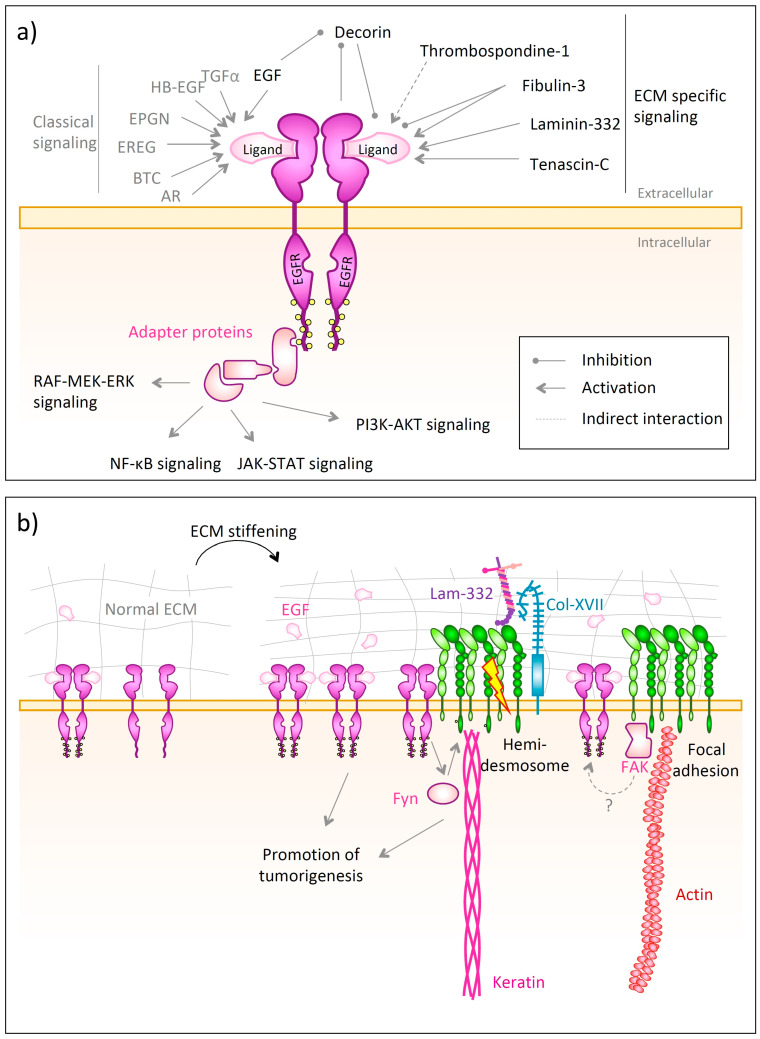Figure 6.
Epidermal growth factor (EGF) receptor (EGFR) interactions with the ECM. (a) EGFR recognizes ligands, such as EGF, transforming growth factor (TGF)-α, amphiregulin (AR), betacellulin (BTC), heparin-binding EGF-like growth factor (HB-EGF), epigen (EPGN) or epiregulin (EREG) [352,353]. Upon their binding the receptor dimerizes followed by auto-phosphorylation and induction of diverse intracellular signaling events [351,352,354,355]; (b) Stiffening of the ECM, as found in tumors, causes EGFR overexpression and increased EGF bioavailability, which fuels tumorigenesis [359,360,361]. EGFR also associates with integrin α6β4 and via the Fyn kinase phosphorylates β4 integrin if integrin α6β4 is bound to laminin-332 [57,362]. This leads to hemidesmosome disruption and fosters tumor proliferation and invasion [57,362]. Furthermore, a stiff ECM increases EGFR phosphorylation, but this is also dependent on focal adhesions, since EGFR interacts with them and might be regulated by the focal adhesion kinase (FAK) [359].

